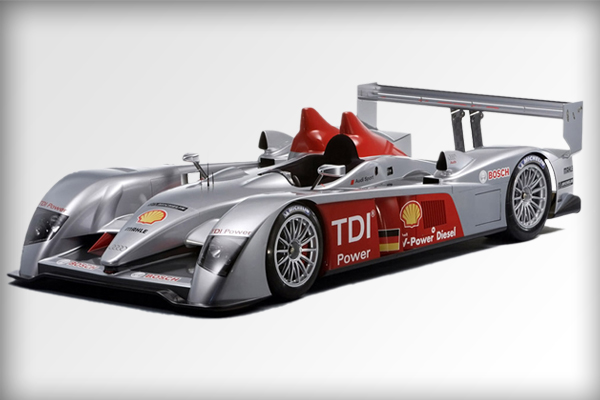Audi R10 TDI engines; the most ambitious and the most expensive diesel engines by Audi

Audi R10 TDI engines; the most ambitious and the most expensive diesel engines by Audi
- by
- Elliot Whipp

Audi R10 engine is powered by diesel, with twin turbocharger and exploits the Turbocharged Direct Injection or TDI technology
Apart from most super cars challenging in the Le Man Prototype-1 series, the Audi R10 engine is powered by diesel, with twin turbocharger and exploits the Turbocharged Direct Injection or TDI technology. The Audi R10 diesel engine actually is a 5.5L V12 made of aluminium, utilizing common rail direct fuel injection technology. The Audi R10 uses the turbochargers supplied by Garrett AiResearch, with 39.9 mm controller shields fitted in front of the intake. The engine’s weight was a big challenge for the Audi engine development division.
The latest Audi 3.0 L V6 TDI weighs 485 lb, and the 4.2 L V8 TDI has 562 lb of weight but their blocks are made of solid graphite iron or CGI materials. The V12 is initially alleged to mull over 441 lb; Audi engineers say that per cylinder weight is the equal to the previous 3.6-litre FSI V8 engine which was used in the Audi R8. The wheel base has been enlarged over the R8 to 2,980 mm to account for it. This is lesser to the 287 lb of a synchronized Judd V10, and even the 397 lb of the Ricardo turbo diesel prototype also based on it.
The turbocharger of R10 has extra puffy restrictor plates to help the car to produce 700 hp in aptitude, inadequate by the fuel burning excellence. This power amount produced by R10 cannot be upheld in races for the reason that it may cause a blocked particulate filter. It has almost double pressure in the cylinders, almost certainly around 200 bars, and weigh against 85 bars for a naturally aspired petrol engine. In the 2009 spell, the R10 TDI was reinstate by the R15 TDI with an undersized, light weight and more efficient TDI engine however, Audi determined on the 24 Hours of Le Mans and Deutsche Touran wagon Masters efforts. In the result of 2009 regulations the Audi R10’s wing was limited
Categories
- 2013 Dubai Motor Show
- 2013 Frankfurt Motor Show
- 2013 Geneva Motor Show
- 2013 Shanghai Motor Show
- 2013 Tokyo Motor Show
- 2014 Detroit Auto Show
- 2014 Geneva Motor Show
- 2014 New York Motor Show
- 2014 North American International Auto Show
- Alfa Romeo
- Aston Martin
- Audi
- Audi A4 Check Engine Light
- Automotive News
- Avensis
- Beijing International Motor Show 2014
- BMW
- Cadillac
- Chevrolet
- Chicago Auto Show 2014
- Chrysler
- Citroen
- Daihatsu
- Detroit Motor Show 2013
- Diesel Engines
- Engines
- EV
- Fiat
- Ford
- General
- General Motors
- Geneva Motor Show 2014
- GM
- Guest Post
- Honda
- Hyundai
- Ideal Engines Reviews
- Infiniti
- Infographics
- Isuzu
- Jaguar
- KIA
- LA Motor Show 2013
- Lancia
- Land Rover
- LandRover
- Lexus
- Lotus
- Maserati
- Mazda
- McLaren
- Mercedes Benz
- Mini
- Mini Cooper S
- Mitsubishi
- New Technology
- Nissan
- Peugeot
- Porsche
- Range Rover
- Renault
- SEAT
- Skoda
- Smart
- Subaru
- Super Cars
- Suzuki
- Top Ten
- Toyota
- Transmissions and Gearboxes
- Uncategorized
- Vauxhall
- Volkswagen
- Volvo
- VW
